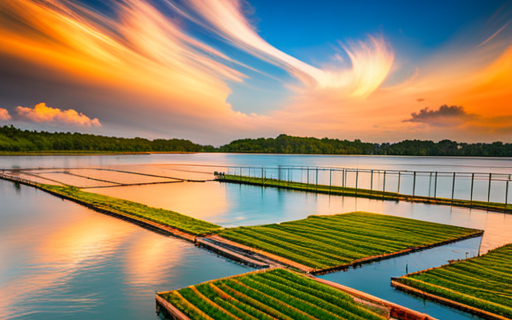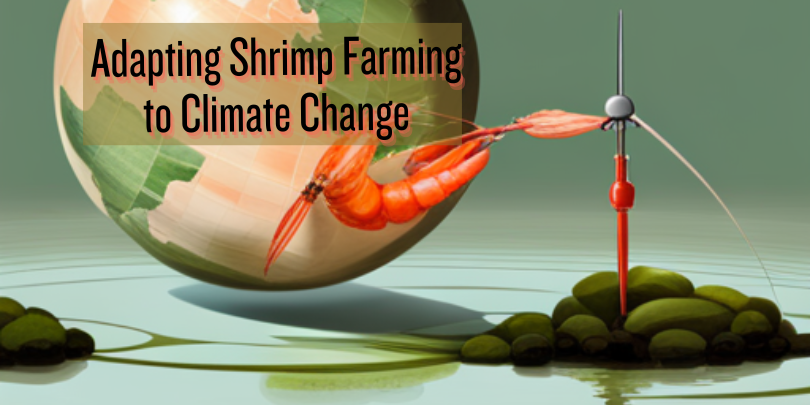The Urgent Challenge: Climate Change and Shrimp Farming
In today’s world, shrimp farming faces an uphill battle due to the devastating impacts of climate change. Specifically, fluctuating temperatures and rising sea levels present significant challenges. Warmer sea temperatures can spur dangerous infections, often leading to disastrous shrimp population die-offs.
The Salinity Quandary: Sea Level Rise and Water Quality
Furthermore, rising sea levels risk saltwater intrusion into shrimp ponds, affecting water quality and shrimp health. Coastal erosion, another byproduct of rising sea levels, threatens the very structural foundation of shrimp farms.
The Wrath of Extreme Weather
Additionally, the increasing frequency and intensity of extreme weather events pose another layer of problems. These events can result in widespread flooding, infrastructure damage, and reduced shrimp supplies. Consequently, these disruptions elevate the risk of disease outbreaks among shrimp populations.
Designing for Resilience: Farm Adaptations
To combat these issues, the industry is innovating with a focus on resilient farm design. By incorporating elevated pond platforms and reinforced infrastructure, farmers can better withstand the ravages of extreme weather.
Salinity Solutions: Effective Management Techniques
Moreover, salinity management techniques are now more crucial than ever. Employing barriers to prevent saltwater and freshwater mixing and setting up efficient drainage systems can significantly mitigate the effects of saltwater intrusion.

Real-Time Disease Monitoring: The Importance of Early Warning Systems
In addition, implementing early warning and disease monitoring systems offers invaluable support. These systems, utilizing real-time data on water quality and shrimp health, empower farmers to act quickly against emerging diseases.
Beyond Shrimp: Species Diversification
To hedge against risks, some shrimp farmers are broadening their species portfolios. This approach diversifies income sources and reduces dependency on a single species, making farms more resilient to environmental changes.
Genetic Innovation: Breeding for Resistance
Additionally, selective breeding techniques are developing more stress-resistant shrimp species. This genetic progress enables farms to better adapt to fluctuating environmental conditions.
Eco-Friendly Methods: Embracing Ecosystem-Based Strategies
Lastly, ecosystem-based strategies like integrated multi-trophic aquaculture and mangrove restoration contribute to long-term sustainability. Not only do these methods create additional income streams, but they also bolster ecosystem health, making it more resilient against climate impacts.
The Road Ahead: Collaboration is Key
For these strategies to succeed, a joint effort among governments, researchers, and the commercial sector is vital. Organizations like Ecolonomics Action Tea are already leading the charge in fostering such collaborations for a sustainable future in shrimp farming.
To sum up, as climate change continues to pose severe challenges, the shrimp farming industry needs to embrace innovative, adaptive, and resilient strategies. Through collaboration and continuous improvement, we can work towards a sustainable and profitable future for shrimp farming.
If you’re seeking specialized advice on creating climate-resilient shrimp farms, consider consulting with experts in aquatic ecology and sustainable aquaculture. Their insights can offer you customized solutions tailored to the unique challenges posed by climate change.
Take Action Now for a Sustainable Shrimp Farming Future
Don’t wait for the next storm or disease outbreak to hit—prepare your shrimp farming operation for the challenges of climate change today. Join forces with organizations, experts, and governmental bodies who are committed to making shrimp farming more resilient and sustainable. Whether it’s through adopting innovative farm designs, leveraging real-time monitoring systems, or diversifying your species portfolio, you have the power to make a difference.
Why Act Now?
- Secure Your Investment: Climate-resilient practices safeguard your farm against environmental uncertainties.
- Boost Profitability: Implementing effective management strategies can lead to higher yields and better product quality.
- Contribute to Sustainability: Your efforts will not only benefit your farm but will also contribute to a more sustainable and responsible aquaculture industry.
How to Get Started
- Consult the Experts: Connect with aquatic ecology professionals and sustainability consultants who can guide you through the transition.
- Invest in Technology: Upgrade your systems with state-of-the-art monitoring and early warning systems.
- Educate Your Team: Ensure everyone involved in your operation understands the importance and methods of sustainable farming.
Start your journey toward a more resilient and sustainable shrimp farming operation today. Let’s build a future where both the industry and the environment can thrive. Take the first step now – Jon our EAT FREE Community!
Would you like more information? Reach out to us for tailored solutions and expert advice in the field of aquatic ecology and sustainable shrimp farming. Your future, and the future of shrimp farming, depends on the actions you take today. Act now!
Related Articles and Resources:
- Sustainable Shrimp Farming: A Crucial Balance Between Environmental Conservation and Industry Expansion
- Impacts of Extreme Weather Events & Climate Change
- Aquaculture Fish Farming – How To Raise Koi In Your Backyard Pond
- IMTA Enhancing Sustainability in Aquaculture Practices through Integrated Multi-Trophic Aquaculture
- The shrimp farms that are catalyzing industry growth in niche nations



